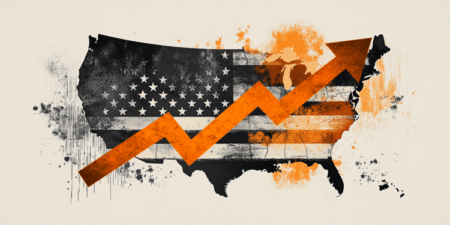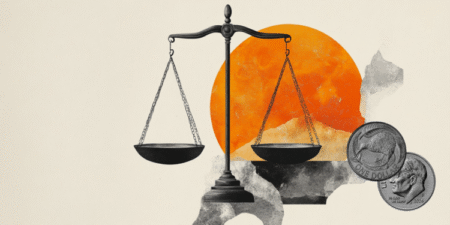the release of
- The Indian Rupee declines to near 88.45 against the US Dollar due to multiple headwinds.
- US tariffs and FIIs’ outflow continue to weigh on the Indian Rupee.
- Investors await the release of India’s Q2 GDP and the US PCE inflation data for July.
The Indian Rupee (INR) posts a fresh all-time low against the US Dollar (USD) on Friday. The USD/INR surges to near 88.45 as higher tariffs imposed by the United States (US) on imports from India, and the consistent outflow of foreign funds from the Indian stock market have remained major drags on the Indian Rupee.
Earlier this week, Washington confirmed additional 25% tariffs on India for buying Russian Oil, which took the overall import duty to 50%, a move that has weakened the competitiveness of Indian products in the global market.
The monthly bulletin released by the Reserve Bank of India (RBI) on Thursday also showed that US tariffs pose downside economic risks in the near term. However, the domestic consumption remained resilient, and a strong demand is coming from rural areas.
Meanwhile, Foreign Institutional Investors (FIIs) have extended their selling in Indian equity markets for the fourth trading day on Thursday and pared stake worth Rs. 3,856.51 crores. So far in August, FIIs have timed stake by Rs. 38,590.26 crores. The outflow of overseas funds has also weighed on Indian benchmark indices. Nifty50 is down
In Friday’s session, investors will focus on the Q2Gross Domestic Product (GDP) data, which will be published at 10:30 GMT. The Indian economy is expected to have risen at a moderate pace of 6.6% on an annualized basis, compared to a 7.4% growth.
The table below shows the percentage change of Indian Rupee (INR) against listed major currencies today. Indian Rupee was the weakest against the Australian Dollar.
| USD | EUR | GBP | JPY | CAD | AUD | INR | CHF | |
|---|---|---|---|---|---|---|---|---|
| USD | 0.03% | 0.26% | 0.10% | 0.00% | -0.05% | 0.79% | -0.07% | |
| EUR | -0.03% | 0.23% | 0.05% | -0.03% | -0.03% | 0.78% | -0.12% | |
| GBP | -0.26% | -0.23% | -0.20% | -0.26% | -0.27% | 0.54% | -0.35% | |
| JPY | -0.10% | -0.05% | 0.20% | -0.03% | -0.17% | 0.75% | -0.10% | |
| CAD | -0.00% | 0.03% | 0.26% | 0.03% | -0.08% | 0.81% | -0.09% | |
| AUD | 0.05% | 0.03% | 0.27% | 0.17% | 0.08% | 0.88% | -0.09% | |
| INR | -0.79% | -0.78% | -0.54% | -0.75% | -0.81% | -0.88% | -0.82% | |
| CHF | 0.07% | 0.12% | 0.35% | 0.10% | 0.09% | 0.09% | 0.82% |
The heat map shows percentage changes of major currencies against each other. The base currency is picked from the left column, while the quote currency is picked from the top row. For example, if you pick the Indian Rupee from the left column and move along the horizontal line to the US Dollar, the percentage change displayed in the box will represent INR (base)/USD (quote).
Daily digest market movers: US Dollar trades almost flat ahead of US PCE inflation data
- A strong upside move in the USD/INR pair appears to be seldom contributed by weakness in the Indian Rupee as the USD Dollar trades flat ahead of the US Personal Consumption Expenditure Price Index (PCE) data for July, which will be published at 12:30 GMT.
- At the time of writing, the US Dollar Index (DXY), which tracks the Greenback’s value against six major currencies, consolidates near 98.00.
- Investors will pay close attention to the US PCE inflation data as it will influence market expectations for the Federal Reserve’s (Fed) monetary policy outlook. Economists expect the US core PCE inflation, which is the Fed’s preferred inflation gauge, to have risen at a faster pace of 2.9% on year against 2.8% in June, with the monthly figure rising steadily by 0.3%.
- Signs of price pressures cooling would allow traders to raise bets supporting interest rate cuts by the Federal Reserve (Fed) for the September policy meeting. On the contrary, inflation rising faster than projected would weaken the same.
- According to the CME FedWatch tool, there is an 85% chance that the Fed will reduce interest rates by 25 basis points (bps) to 4.00%-4.25% in the policy meeting in September.
- On Thursday, Fed Governor Christopher Waller explicitly announced that he would support a 25-bps interest rate cut in the policy meeting next month, and added that there will be more cuts in the next three to six months. “The time has come to move policy to a more neutral stance,” Waller said. The reasoning behind Waller’s dovish remarks is weakening labor market conditions, which he warned that it could deteriorate further and quickly.
- Meanwhile, the safe-haven appeal of the US Dollar is under threat as Fed Governor Lisa Cook filed a lawsuit on Thursday for her termination by US President Donald Trump over mortgage allegations. According to a report from Reuters, a hearing on the motion is set for 14:00 GMT on Friday. The verdict by the court against Trump could dampen the credibility of the White House. Market experts have already seen the event as Trump’s attempt to politicize the Fed.
Technical Analysis: USD/INR refreshes all-time highs around 88.50
The USD/INR pair climbs to near 88.45 on Friday, the highest level seen in history. The near-term trend of the pair is bullish as it holds above the 20-day Exponential Moving Average (EMA), which trades near 87.52.
The 14-day Relative Strength Index (RSI) rises above 60.00. A fresh bullish momentum would emerge if the RSI holds above that level.
Looking down, the 20-day EMA will act as key support for the major. On the upside, the round figure of 89.00 will be a critical hurdle for the pair.
Economic Indicator
Core Personal Consumption Expenditures – Price Index (YoY)
The Core Personal Consumption Expenditures (PCE), released by the US Bureau of Economic Analysis on a monthly basis, measures the changes in the prices of goods and services purchased by consumers in the United States (US). The PCE Price Index is also the Federal Reserve’s (Fed) preferred gauge of inflation. The YoY reading compares the prices of goods in the reference month to the same month a year earlier. The core reading excludes the so-called more volatile food and energy components to give a more accurate measurement of price pressures.” Generally, a high reading is bullish for the US Dollar (USD), while a low reading is bearish.
Read more.
Read the full article here
















